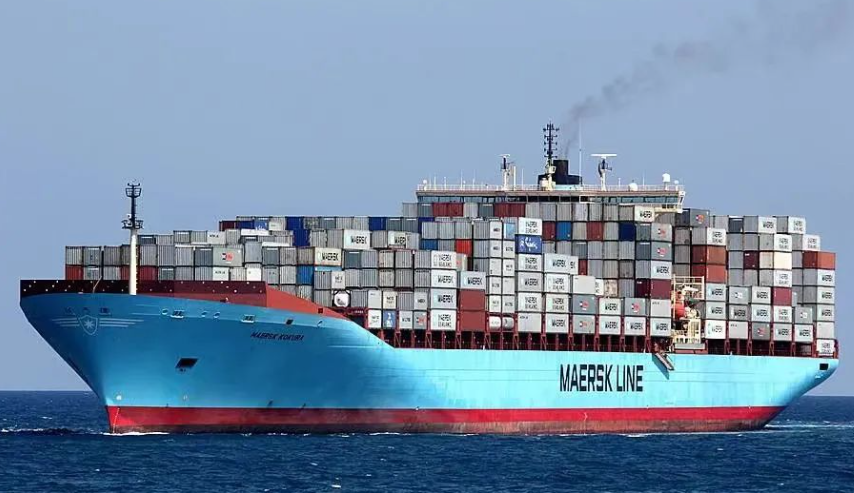As the situation in the Red Sea heats up, more container ships are bypassing the Red Sea-Suez Canal route to bypass the Cape of Good Hope, and freight rates for Asia-Europe and Asia-Mediterranean trade have quadrupled.
Shippers are rushing to place orders in advance to mitigate the impact of longer transit times from Asia to Europe. However, due to delays in the return voyage, the supply of empty container equipment in the Asian region is extremely tight, and shipping companies are limited to high-volume “VIP contracts” or shippers willing to pay high freight rates.
Even so, there is still no guarantee that all the containers delivered to the terminal will be shipped before the Chinese New Year on February 10, as carriers will preferentially select spot cargoes with higher rates and defer contracts with lower prices.
February rates are over $10,000
On the 12th local time, the US Consumer News and Business Channel reported that the longer the current tension in the Red Sea continues, the greater the impact on global shipping, shipping costs will become higher and higher. The warming situation in the Red Sea is having a ripple effect, pushing up shipping prices around the world.
According to statistics, affected by the situation in the Red Sea, container freight rates on some Asia-Europe routes have soared nearly 600% recently. At the same time, in order to compensate for the suspension of the Red Sea route, many shipping companies are shifting their vessels from other routes to Asia-Europe and Asia-Mediterranean routes, which in turn pushes up shipping costs on other routes.
According to a report on Loadstar’s website, the price of shipping space between China and Northern Europe in February was prohibitively high, at more than $10,000 per 40-foot container.
At the same time, the container spot index, which reflects average short-term freight rates, continued to soar. Last week, according to the Delury World Container Freight Composite Index WCI, freight rates on Shanghai-Northern Europe routes rose a further 23 per cent to $4,406 /FEU, up 164 per cent since December 21, while spot freight rates from Shanghai to the Mediterranean rose 25 per cent to $5,213 /FEU, up 166 per cent.
In addition, a shortage of empty container equipment and dry draft restrictions in the Panama Canal have also pushed up trans-Pacific freight rates, which have risen by about a third since late December to about $2,800 per 40 feet between Asia and the West. The average Asia-U.S. East freight rate has risen 36 percent since December to about $4,200 per 40 feet.
A number of shipping companies announced new freight standards
However, these spot rates will look relatively cheap in a few weeks’ time if the shipping line’s rates meet expectations. Some Transpacific shipping lines will introduce new FAK rates, effective January 15. A 40-foot container will cost $5,000 on the West Coast of the United States, while a 40-foot container will cost $7,000 at East Coast and Gulf Coast ports.
As tensions continue to rise in the Red Sea, Maersk has warned that the disruption to shipping in the Red Sea could last for months. As the world’s largest liner operator, Mediterranean Shipping (MSC) has announced an increase in freight rates for late January from the 15th. The industry predicts that trans-Pacific freight rates could reach their highest since early 2022.
Mediterranean Shipping (MSC) has announced new freight rates for the second half of January. From the 15th, the rate will rise to $5,000 on the US-West route, $6,900 on the US-East route, and $7,300 on the Gulf of Mexico route.
In addition, France’s CMA CGM has also announced that starting from the 15th, the freight rate of 20-foot containers shipped to western Mediterranean ports will increase to $3,500, and the price of 40-foot containers will rise to $6,000.
Huge uncertainties remain
The market expects supply chain disruptions to continue. Kuehne & Nagel analysis data show that as of the 12th, the number of container ships diverted due to the Red Sea situation has been determined to be 388, with an estimated total capacity of 5.13 million TEU. Forty-one ships have already arrived at their first port of destination after being diverted. According to logistics data analysis firm Project44, daily ship traffic in the Suez Canal has dropped 61 percent to an average of 5.8 vessels since before the Houthi attack.
Market analysts pointed out that the US and UK strikes on Houthi targets will not cool down the current situation in the Red Sea, but will greatly increase local tensions, causing shipping companies to avoid the Red Sea route for longer. The route adjustment has also had an impact on loading and unloading conditions at ports, with waiting times in South Africa’s major ports of Durban and Cape Town reaching double digits.
“I don’t think shipping companies will return to the Red Sea route anytime soon,” said market analyst Tamas. “It seems to me that after the US-UK strikes against Houthi targets, the tension in the Red Sea may not only not stop, but increase.”
In response to the US and UK air strikes against the Houthi armed forces in Yemen, many Middle Eastern countries have expressed grave concern. Market analysts say there is huge uncertainty about the current situation in the Red Sea. However, if Saudi Arabia, the United Arab Emirates and other Middle Eastern oil producers are involved in the future, it will lead to large fluctuations in oil prices, and the impact will be more far-reaching.
The World Bank has issued an official warning, pointing to continued geopolitical unrest and the possibility of energy supply disruptions.
Sources: Chemical fiber Headlines, Global Textile Network, Network
Post time: Jan-17-2024


